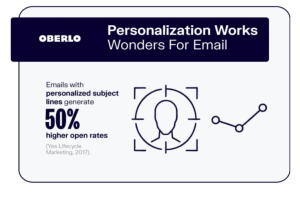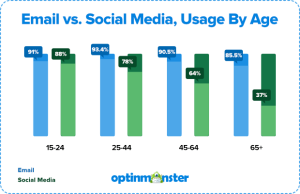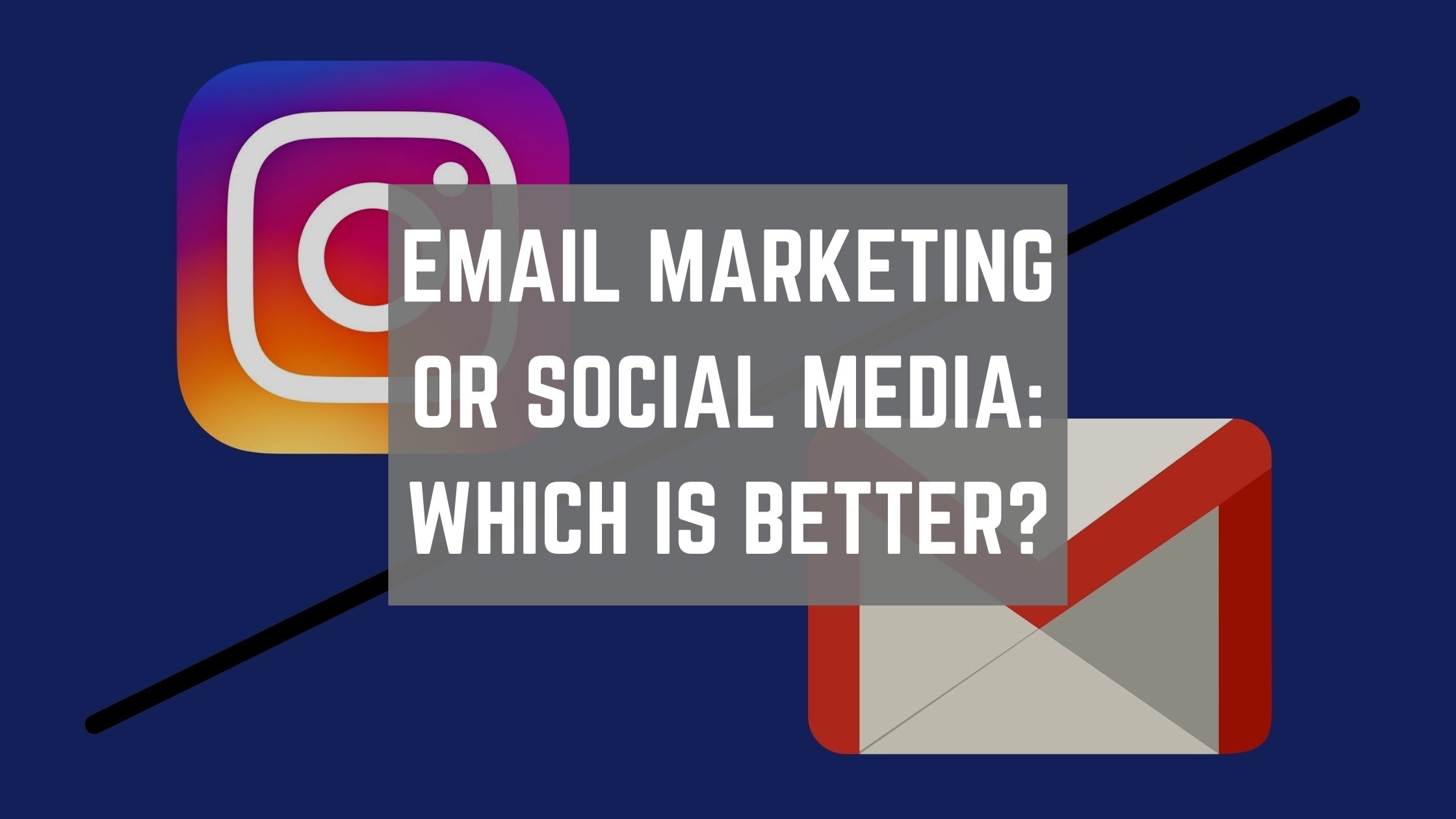For the last few decades, email has reigned supreme in the world of business and consumer marketing. 95% of consumers check and use their email daily, with roughly two-thirds of consumers reporting making a purchase after receiving a promotional email. Still, as of July 2021, there are 4.48 billion (yes, billion!) active social media users worldwide. These platforms are here to stay and a force to be reckoned with. Both channels are viable avenues for building your brand, increasing web traffic, and generating leads. So, which is better– Email marketing or social media? It depends!
Contents
Benefits and Uses of Email Marketing
Email is still essential for business. The main advantage of email marketing is that it’s cheap. In general, it should be used to build awareness of your brand, drive traffic to your website, encourage customer loyalty, and tackle conversions while nurturing existing leads.

Someone’s email inbox has information tailored uniquely to them. By utilizing personalized content in your email marketing, you further increase the chance customers will open your message.
Email can be great for specific, short-term goals and objectives like a sale or upcoming holiday. It’s also a way to ensure people see your message at a specific time. For example, sending out an email blast at 8 AM on a Monday gives a good chance people will see it when they sit down at their desks at 9 AM for the workday.
In addition to this, email marketing is permission-based. Those on your email list have explicitly given you the go-ahead to contact them. They’re likely warmer leads and will be more receptive. Email marking is relatively safe and stable compared to social media. You own your email list and it’s not subject to changes in algorithms— it is less variable and more straightforward.
Finally, email gives you data on your customer base. You can measure open rates, click-through rates, bounces, complaints of spam, unsubscribes, and more. This is all helpful feedback you can use for your business strategy. You can also use your email list for A/B testing. Try testing different messages on the same audience to see which yields more turnout.
Benefits, Drawbacks, and Uses of Social Media Marketing
Social media is a much more casual platform and also builds brand awareness. It’s a way to provide bite-sized bits of industry information and create communities among your customers. The area that social media shines is when trying to find new and potential customers. By giving you a platform to build your brand, you also have a chance to generate revenue. The catch is that it often takes a long time before your social media following is substantial enough to bring in a profit.

Email usage is relatively consistent across all age ranges while social media prevails with younger generations. Investing in both is a smart choice for your marketing strategy.
More people create social media accounts each day and it has become interwoven in how consumers interact with major brands. Without a social media presence, your business isn’t tapping into the entire customer base that is available to it. Social media marketing broadens the reach of your business because platforms like Facebook or Instagram are so widespread and accessible. It’s an easy way for customers to start a dialogue and get in contact with you with any questions they have about your business. But with any social media presence, you should have a marketing strategy.
The major drawback of social media is that automatically means you’re a part of a larger platform. That platform “owns” your followers and can change the algorithm at their own will, which changes when and how people see your posts. Sometimes, if your posts don’t play well with the algorithm, they won’t show up in users’ feeds. This in turn can impact your reach and engagement. You should note that social media is generally more expensive. It is free to start an account, but advertising requires targeted ads and sponsored posts which can rack up a bill fast.
Which is Better?
It depends! The answer is not as clear-cut as it used to be. But before deciding you should think about several key points. Define what your business goals are and make sure you understand the requirements, uses, and limitations of each platform. Finally, figure out what your business’ budget is for marketing because it can be the determining factor. Businesses often choose email marketing for personalized content and profitability while social media marketing builds a strong brand reputation and image
Conclusion
Social media has changed how businesses post content and market to customers. Still, email is a primary method of communication and an effective way to create a personalized message for the customer. There is no one-size-fits-all advice for which method is better for your business. Instead, you must weigh the pros and cons of each and decide which is a better strategy to invest your time and money in.


